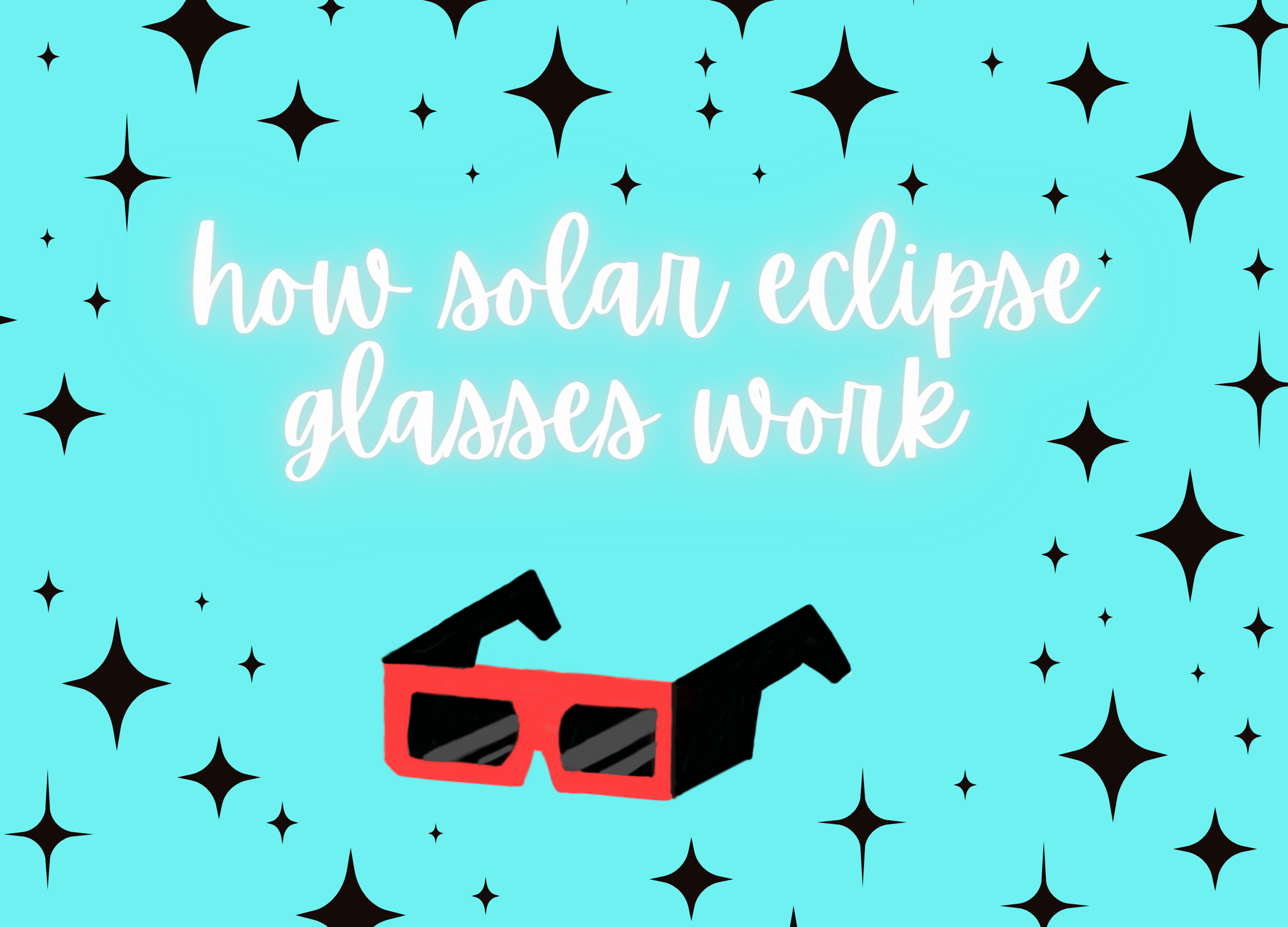Edited by: Dominique Samantha & Nivi Chozhan, Blogged by Sahithi Lingampalli
A solar eclipse occurs when the Moon casts a shadow that covers part of the Earth. The Sun becomes partially covered as well, allowing for beautiful sights in the sky. To see solar eclipses, people travel far and wide. With excitement, they may look at the Sun before the solar eclipse occurs. This can be dangerous as direct eye exposure to the Sun’s UVA and UVB rays can lead to serious eye problems like macular degeneration or even blindness. Others may choose to wear sunglasses or 3D movie glasses, but these do not provide nearly as much protection as the best equipment - solar eclipse glasses.
While sunglasses can block only about 15% of light, solar eclipse glasses can block almost all ultraviolet rays and visible light. This is due to the difference in materials. Sunglasses are made of glass or plastic, both of which are not strong enough to prevent light from shining through. Solar eclipse glasses, however, are made of a special type of material called black polymer. It is a resin that consists of carbon molecules. This makes them up to 100,000 times darker than your branded sunglasses!
As for 3D movie glasses, these are not helpful at all with solar eclipses. Although they appear darker like authentic solar eclipse glasses, they are meant for the projection of 3D images, something that is not related to solar eclipses. The light will still be able to shine through the flimsy plastic.
Within solar eclipse glasses, there are different types. You may find inexpensive, plastic ones that are sold in packs or high end solar eclipse glasses. While buying in packs or even making your own seem like the better deal, this is hardly the case. Recently, many people have been attempting to create their solar eclipse glasses and sell them online. Some may even be regular sunglasses with a sticker labeled ‘Solar Eclipse Glasses’ stuck on them. How can we tell which solar eclipse glasses are better? All solar eclipse glasses certified for safety are labeled with the International Organization for Standardization (ISO) 12312-2 label. In addition, ensure that the solar eclipse glasses you buy do not have lenses that are damaged. If you have undamaged solar eclipse glasses with the ISO 12312-2 label, you can watch the solar eclipse as long as you would like and reuse the glasses.
If proper solar eclipse glasses are not the right fit for you, there is another option. The pinhole projection is a common science experiment for elementary students that does not pose any dangers. To do this, all you have to do is make a small opening in an item (like a box or a card). Let the sunlight shine through it and onto another surface. When you do this experiment and watch the eclipse, you will not be looking directly at the eclipse. Instead, you will be watching the shadows the eclipse is casting. With more solar eclipses to come in the future, keep in mind how solar eclipse glasses work to ensure that you can watch the beautiful sights of the sky safely.
References
Peters, L. (2017, August 17). How To Determine Whether Or Not Your Solar Eclipse Glasses Are Legit. Bustle.Link
How Do Solar Eclipse Glasses Work? (2019, December 3). Rx Prescription Safety Glasses. Link

